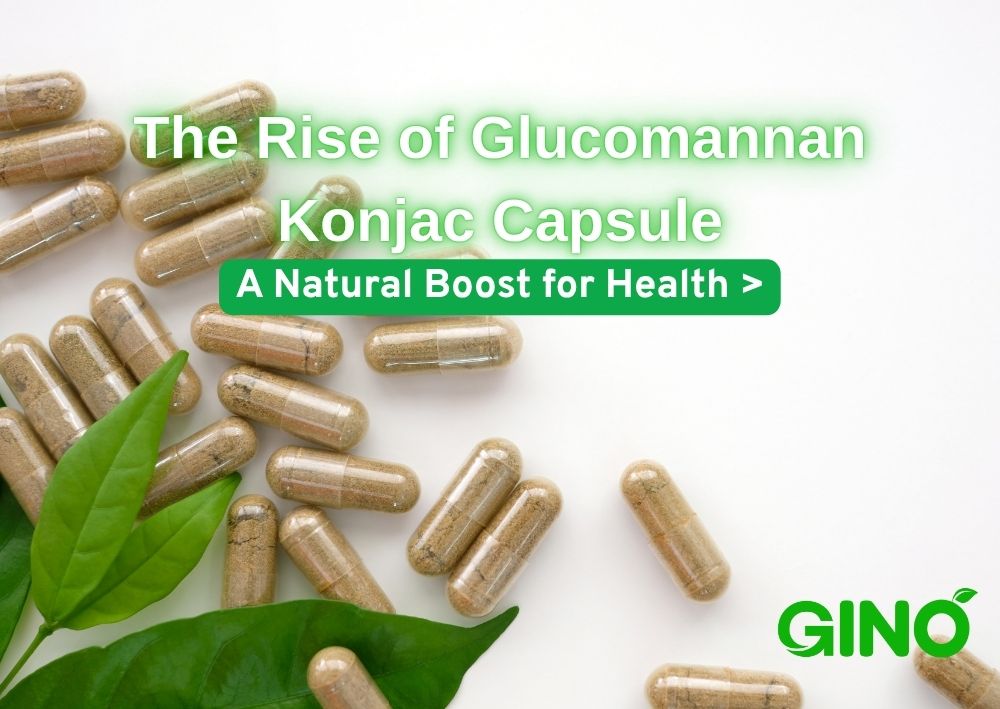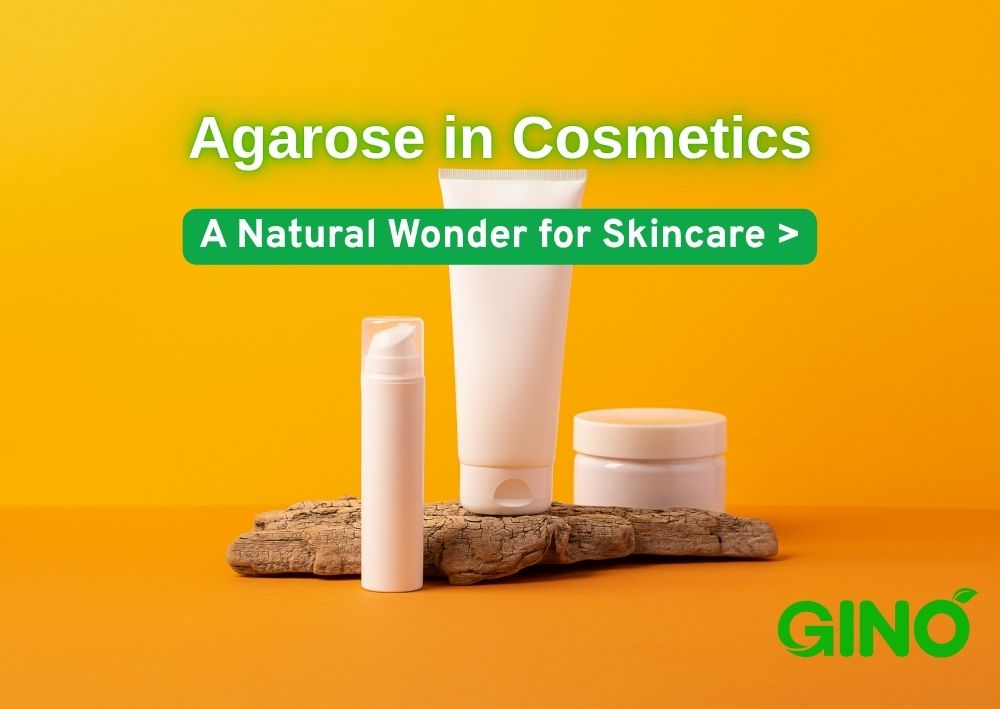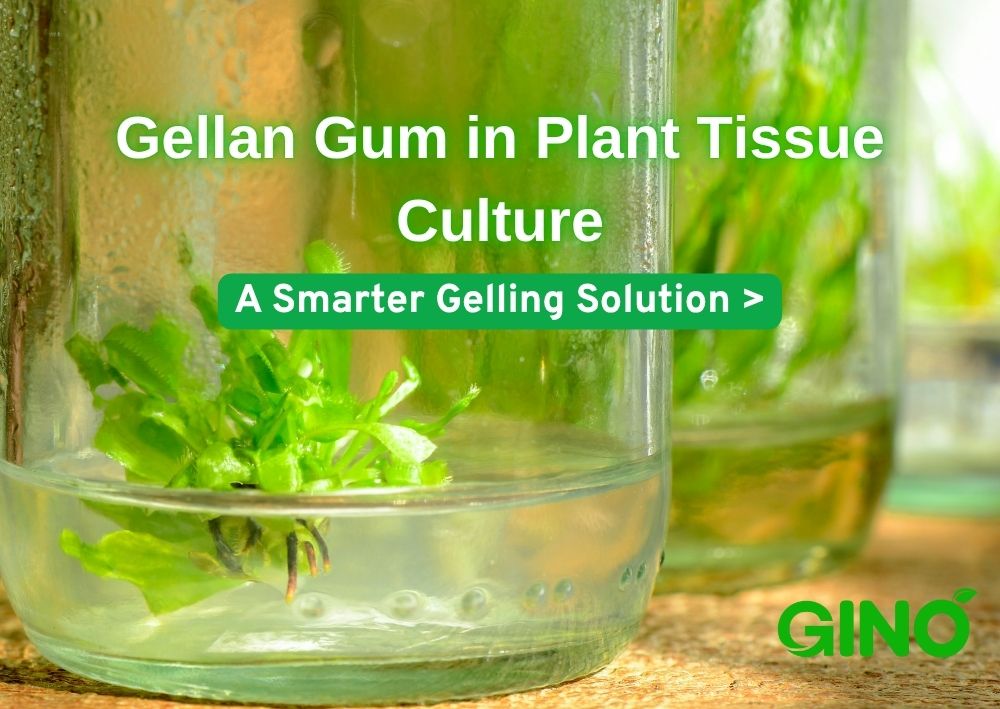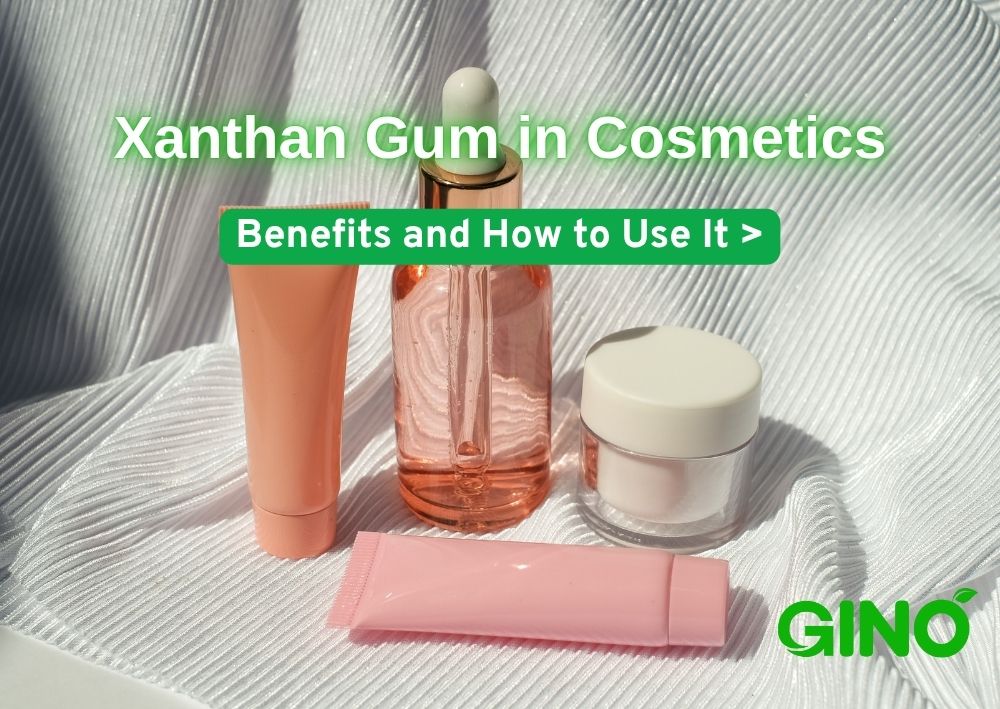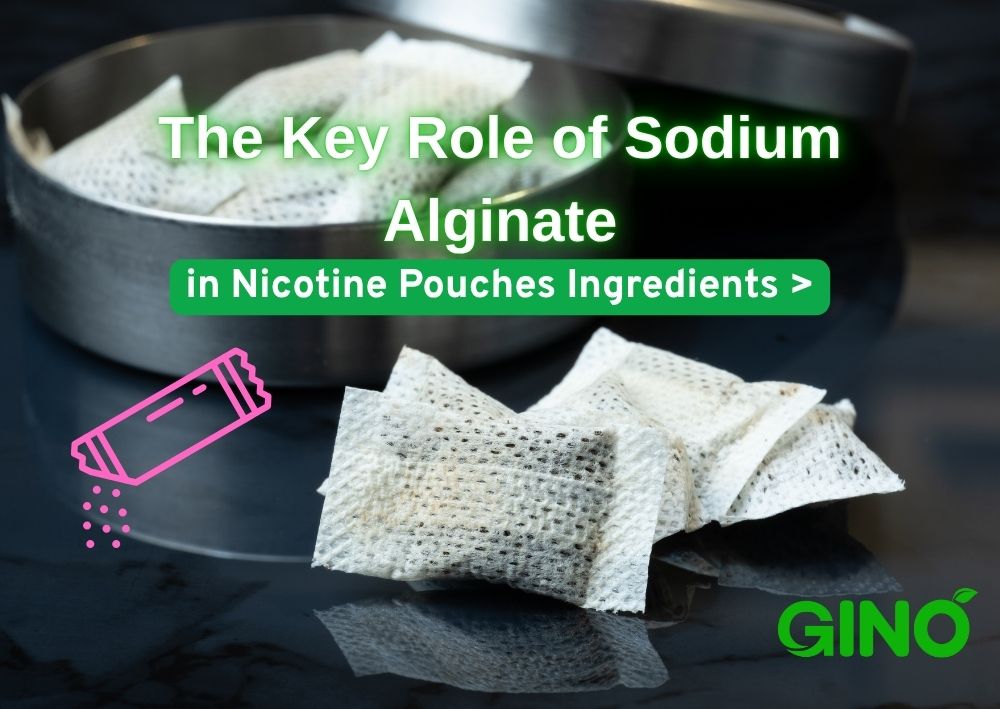
The Ultimate Guide to Sodium Alginate Beads: Definition, Recipe, Tips, Uses
Guide to Sodium Alginate Beads
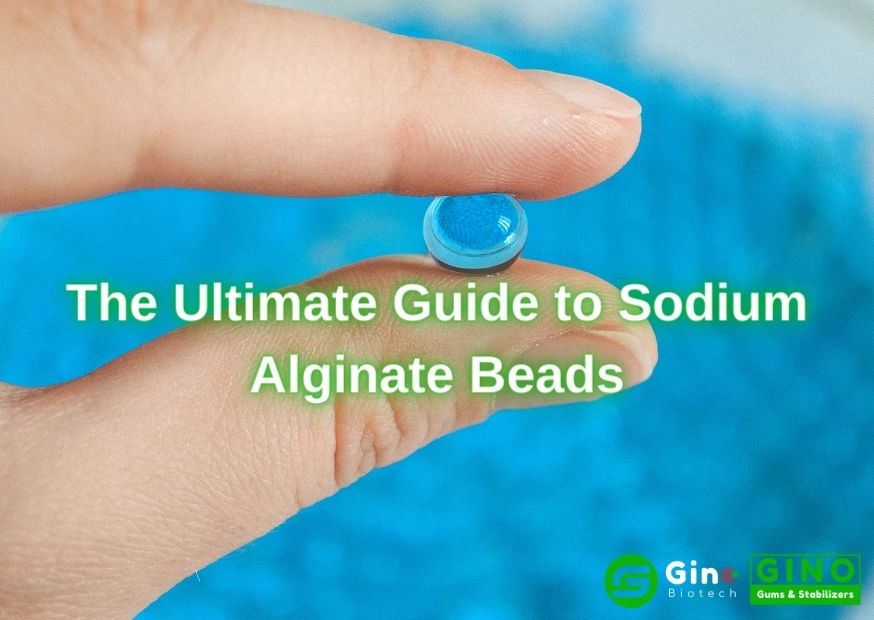
1. What are Sodium Alginate Beads
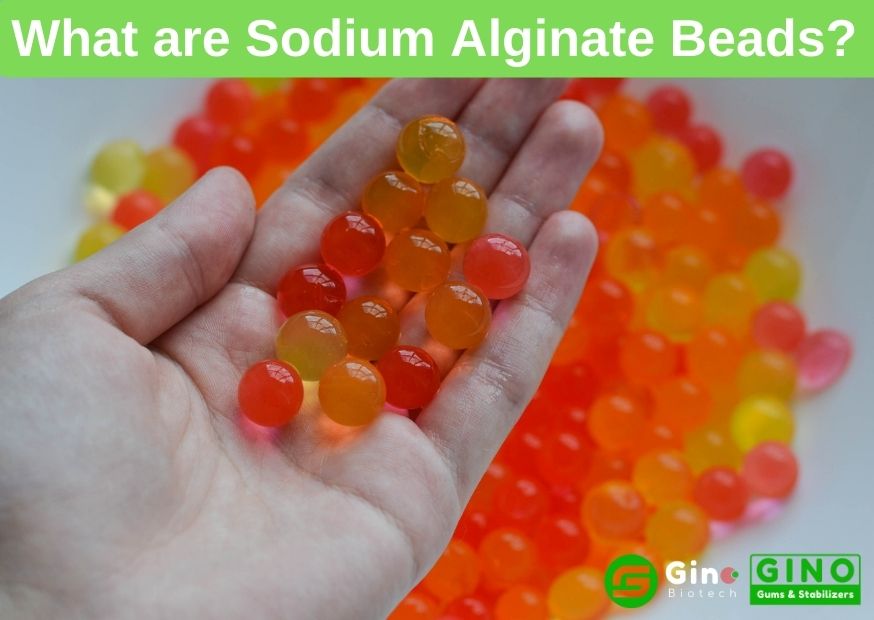
Sodium alginate beads also called popping boba, are made by combining sodium alginate, calcium lactate (or calcium chloride), fruit juice (fruit puree, soya milk, coca cola, yogurt, etc.), and drinking water (deionized water).
It belongs to the spherification process in molecular gastronomy, and its principle is that a gel layer is formed when the water-soluble sodium alginate and calcium ions react to form cross-linked bonds between the macromolecules.
2. Principle of Sodium Alginate Beads
While the whole process may look like magic, It’s simply a chemical reaction between sodium alginate and calcium chloride.
Sodium alginate is made from seaweed and consists of alginate, negatively charged molecules called polysaccharides, and positively charged sodium ions that bind to the alginate molecules.
When dissolved in food or juice, the alginate separated from the sodium ions and forms a liquid, when the alginate comes into contact with the calcium chloride solution, the alginate molecules bind to the calcium ions, forming calcium alginate.
As the doubly charged calcium ions combined two different alginate molecules simultaneously, the solution thickens and becomes gel-like.
That is why the outside of the sodium alginate beads are firmer. It’s a shell of calcium alginate. If removed from the calcium chloride solution soon enough, the calcium never reaches the inside of the beads, so it’s still liquid-like.
3. Spherification Chemical Reaction
The chemical reaction that forms sodium alginate beads can be written as the chemical formula.
Two molecules of sodium alginate react with one molecule of calcium chloride to form two molecules of salt and one molecule of calcium alginate
2 NaC6H7O6 + CaCl2 --> 2 NaCl + C12H14CaO12
Sodium Alginate + Calcium Chloride --> Sodium Chloride + Calcium Alginate
4. How to Make Alginate Beads
4.1 Direct Spherification Recipe
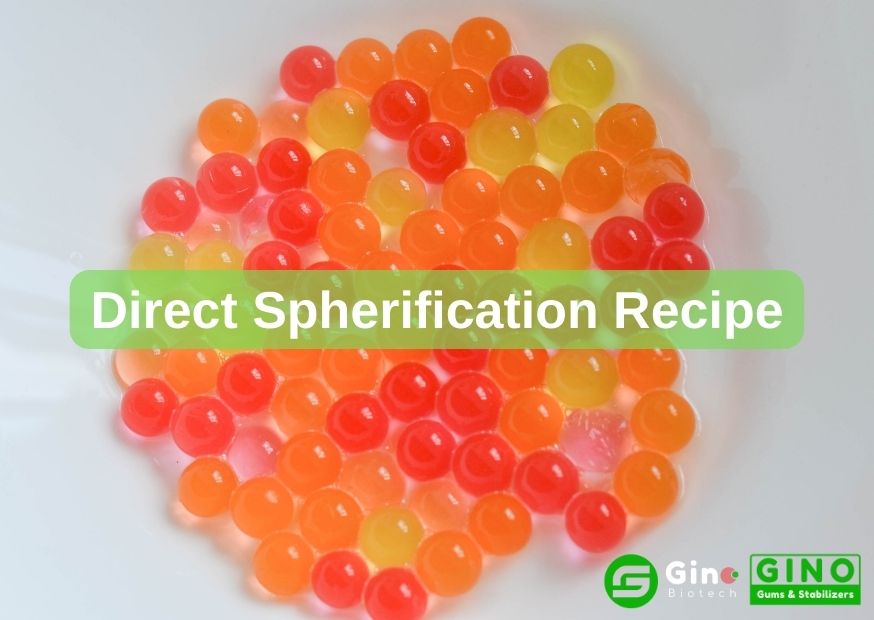
Below is a recommended recipe for direct spherification.
Ingredients | Amount |
Sodium Alginate | 2g |
Juice | 200ml |
1% Calcium Lactate Solution | As requested |
- - Remarks
- We recommend using a medium viscosity sodium alginate, about 400-600 cps, because it is not easy for beginners to make beads with low viscosity, and high viscosity makes the surface of the beads too sticky, and there are trailing (small tail), but more importantly, the cost is also very high.
- Many people use calcium chloride solution, but we recommend using calcium lactate instead because calcium chloride has a bitter taste.
4.2 Sodium Alginate Beads Preparation Steps
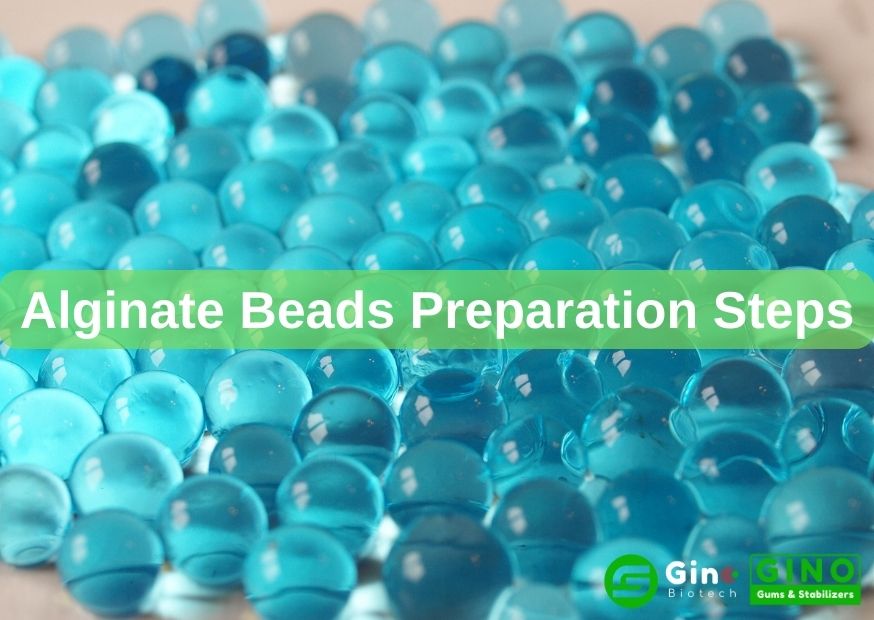
Contact us to Download The Full Recipe
Click Here4.3 Tips and Tricks
Although the chemistry and technique for making sodium alginate beads are fairly simple, getting the conditions just right can be challenging. There are four variables that affect the process of spherification.
4.4 Reverse Spherification Recipe
Ingredients | Amount |
Calcium Lactate | 2g |
Juice | 200ml |
1% Sodium Alginate Solution | As requested |
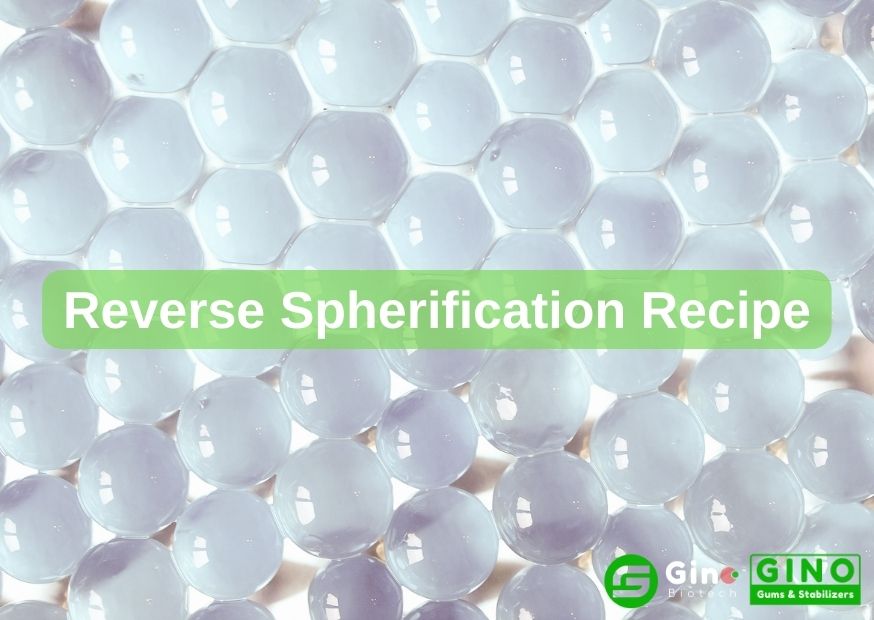
Simply put, pour the calcium lactate into the juice and drop the mixture into the sodium alginate solution.
By reversing the spherification, it is possible to make larger-sized sodium alginate beads (spheres).
Another advantage is that because the center of the beads does not contain anything that would gel, the beads can never become completely solid.
Therefore, beads made in this way can be preserved indefinitely.
- Cocktail beads are commonly used to reverse spherification, making the film thicker and more resistant to storage
5. Why do the Drops come off as Spheres?

We habitually think that liquids do not have a specific shape, either in a puddle of water or in a container it takes the shape of a container.
But actually, this is due to gravity.
If a liquid is in weightlessness, for example, in another liquid of the same density, it has a spherical shape.
And free fall is the state of weightlessness, so the liquid is also spherical when it is falling.
When it enters the calcium lactate solution and the surface is covered with a film to lock it, it also becomes a spherical shape.
6. Sodium Aginate Beads Uses
Alginate is stable at high temperatures, biodegradable, and approved for use in food, cosmetic and pharmaceutical applications.
In addition to its excellent performance in the food industry, alginate beads have shown their magic in the tobacco industry, pharmaceuticals, and bioengineering.
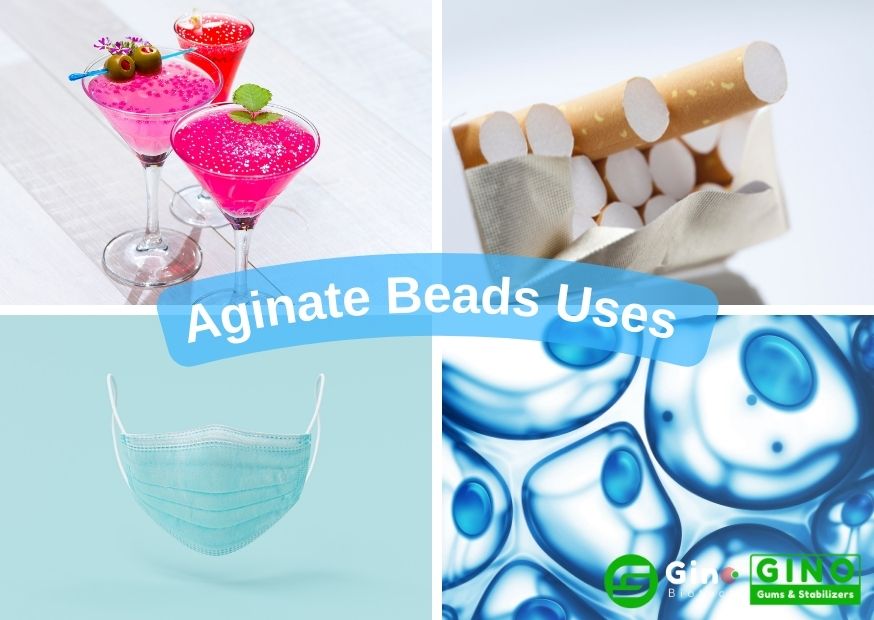
These alginate beads can be used not only in juice but also in milk tea, desserts, ice cream, coco cola, chewing gum, and cocktails, do you think it is amazing?
Friends familiar with the tobacco industry know that popping beads is a tobacco accessory that has emerged in recent years. Also called a tobacco capsule - a bead embedded in the filter releases a special flavor when pinched and popped, giving cigarettes a more layered and distinctive taste and smell experience. The novel taste brought by the popped beads adds a lot of color to many cigarette products.
In order to get rid of the odor, many companies have come up with the " brilliant idea " to add alginate beads to the mask.
That is, the beads are stored in the mask sandwich, if you want to breathe some aromatic air, break the beads in the mask, the aroma will be "broken beads and out", and some masks can also store more than two beads, the taste is different, the experience is different.
It is said to have the benefit of preventing motion sickness.
- Potential use of alginate beads as a chondrocyte delivery vehicle and stepwise dissolving porogen in a hydrogel scaffold for cartilage tissue engineering
- Besides protein immobilization, calcium alginate beads are also widely used for cell-immobilization
7. Turning Spherification into a Science Project
Since the spherification process depends on many variables, you can easily turn to make alginate beads (popping boba) into a science project. (Juice balls, yogurt balls, etc.).
The acidity or calcium content of the food is a good independent variable for a science experiment. If you want to explore this spherification process in more detail, for example, you can study how the acidity of the food affects the shape of the popping boba you make, or you should try foods with different calcium content to test how much sodium citrate you must add to make this spherification process successful.
Since good popping boba is spherical or ball-shaped, one way to quantify the success of your spherification process in a science project is to measure the longest and shortest dimensions or diameter and height of the popping boba you make.
You can measure these dimensions by placing the popping boba on graph paper and counting the lines it spans; in a perfect sphere, the diameter and height are the same.
Experimenting with spherification is the best way to find out which foods and liquids make the best beads and what pH levels produce the most perfect spheres.
- To purhcase sodium alginate medium viscosity or get ideas for sphefication science project, please contact us.

